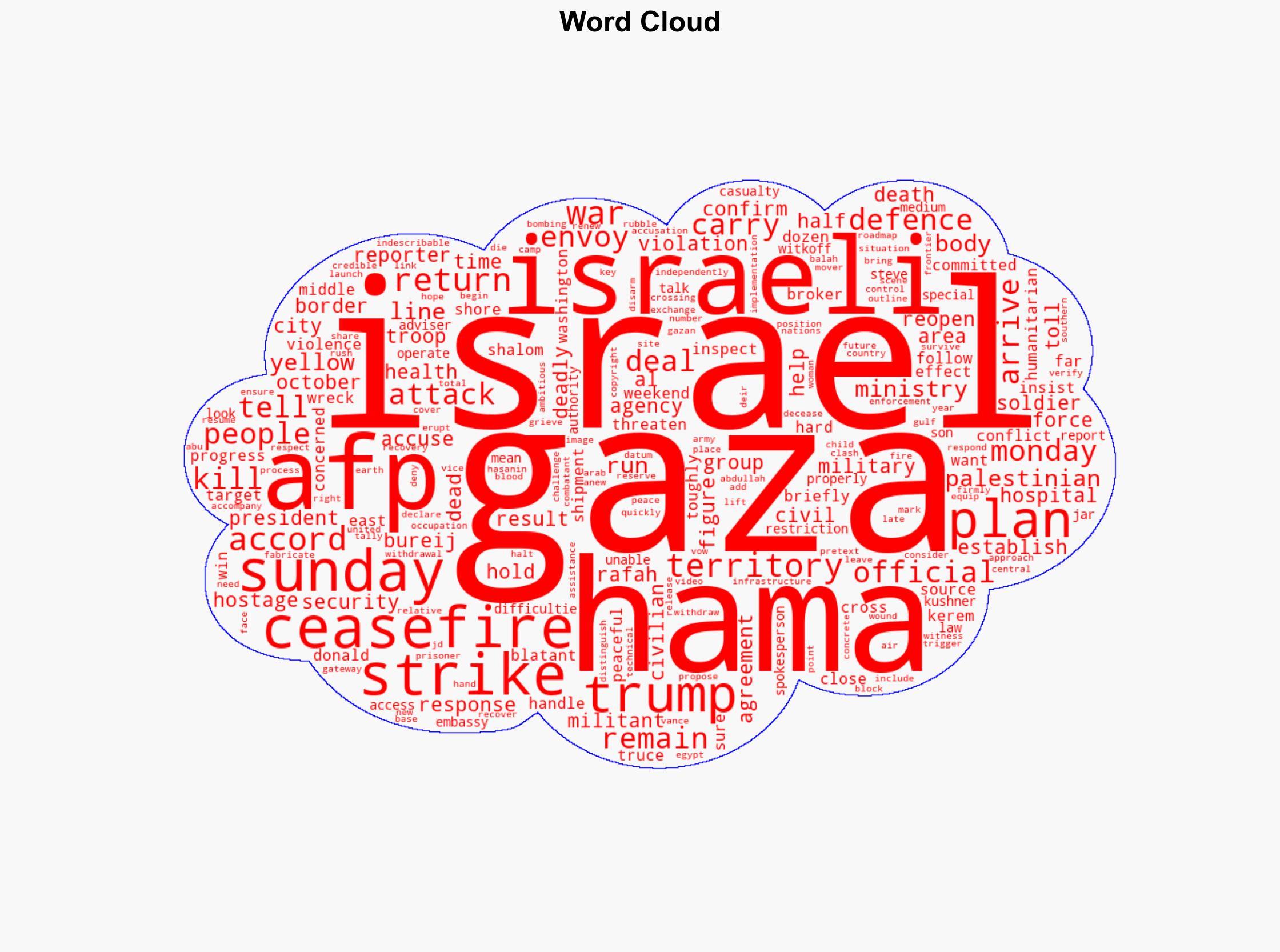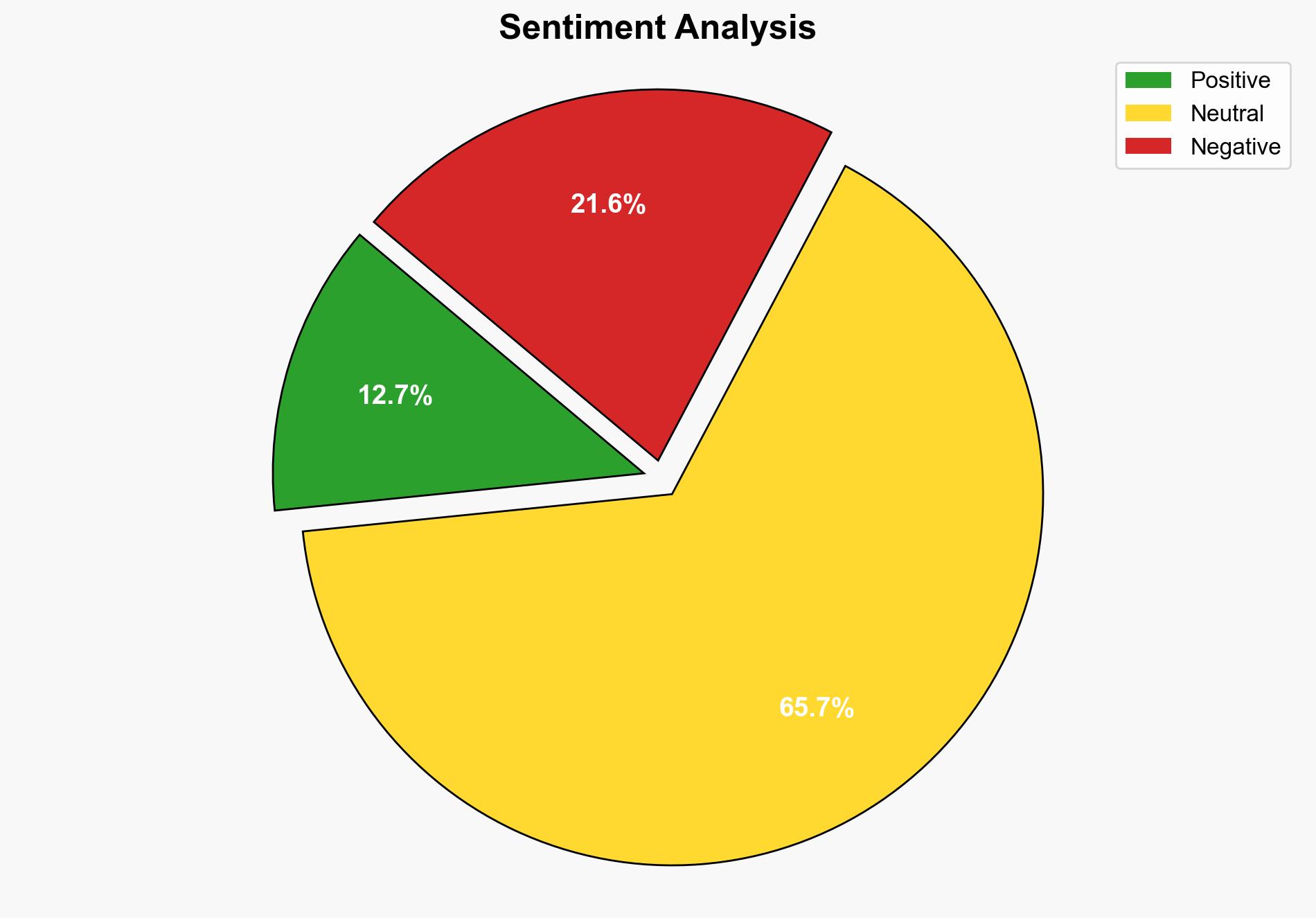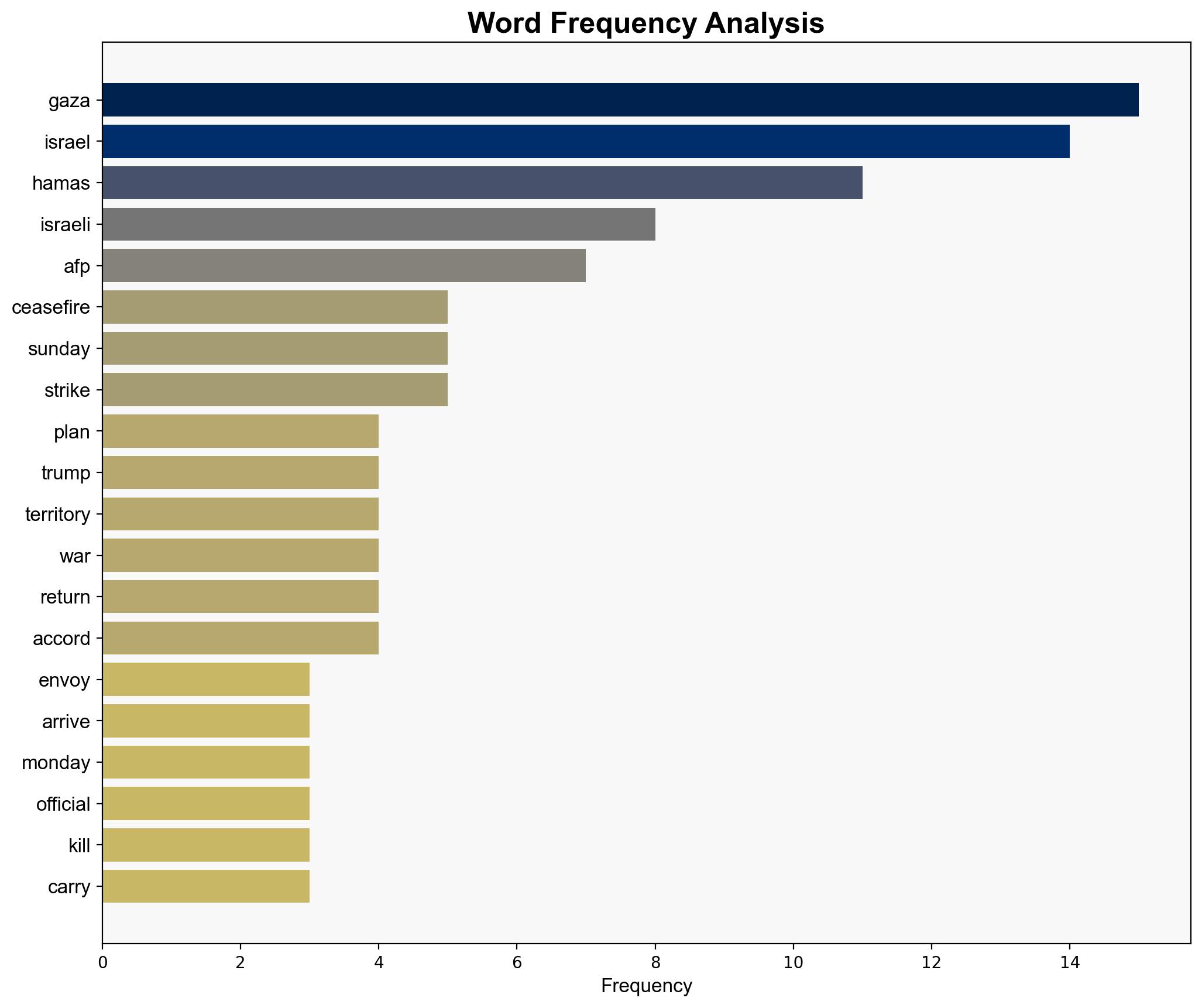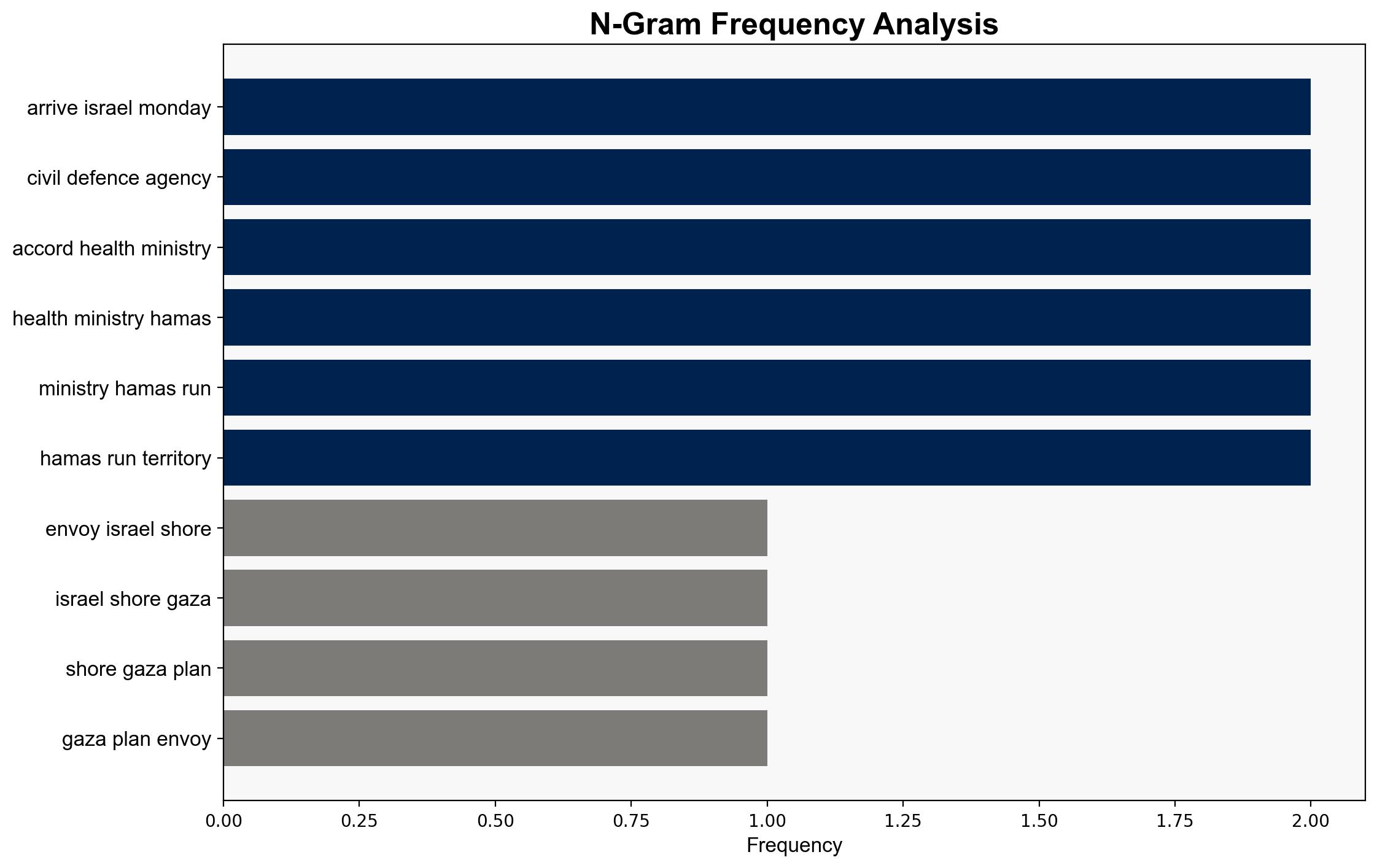US Envoys In Israel To Shore Up Gaza Plan – International Business Times
Published on: 2025-10-20
Intelligence Report: US Envoys In Israel To Shore Up Gaza Plan – International Business Times
1. BLUF (Bottom Line Up Front)
The most supported hypothesis is that the US envoys’ visit to Israel aims to reinforce the fragile ceasefire and facilitate the implementation of a broader peace plan, despite ongoing tensions. Confidence level: Moderate. Recommended action: Increase diplomatic engagement and monitor regional responses to the ceasefire’s implementation.
2. Competing Hypotheses
1. **Hypothesis A**: The US envoys’ visit is primarily intended to stabilize the ceasefire and advance a comprehensive peace plan, including humanitarian aid and infrastructure development in Gaza.
2. **Hypothesis B**: The visit is a strategic maneuver to bolster US influence in the region, using the ceasefire as a pretext to strengthen alliances and counteract adversarial entities.
Using Analysis of Competing Hypotheses (ACH), Hypothesis A is better supported by the presence of high-level US officials and the focus on humanitarian and security measures. Hypothesis B, while plausible, lacks direct evidence of broader geopolitical maneuvers beyond the immediate ceasefire context.
3. Key Assumptions and Red Flags
– **Assumptions**: The ceasefire is assumed to be a genuine effort by both parties to de-escalate tensions. The US is assumed to have sufficient leverage to influence both Israeli and Palestinian actions.
– **Red Flags**: The potential for renewed violence if ceasefire terms are violated. Lack of independent verification of casualty figures raises concerns about information reliability.
– **Blind Spots**: Insufficient insight into Hamas’s internal decision-making processes and potential external influences from other regional actors.
4. Implications and Strategic Risks
– **Geopolitical**: A breakdown in the ceasefire could lead to regional instability, affecting US interests and allies.
– **Economic**: Prolonged conflict may disrupt trade routes and economic activities in the region.
– **Psychological**: Continued violence could exacerbate humanitarian crises, impacting public perception and international support.
5. Recommendations and Outlook
- Enhance diplomatic efforts to ensure compliance with the ceasefire terms and address humanitarian needs.
- Monitor regional actors’ responses to the US involvement and adjust strategies accordingly.
- Scenario Projections:
- Best: Successful implementation of the peace plan leading to long-term stability.
- Worst: Ceasefire collapse resulting in renewed hostilities and regional escalation.
- Most Likely: Periodic tensions with intermittent progress on the peace plan.
6. Key Individuals and Entities
– Donald Trump
– Steve Witkoff
– Jared Kushner
– Abdullah Abu Hasanin
– JD Vance
7. Thematic Tags
national security threats, regional stability, peace negotiations, humanitarian aid





